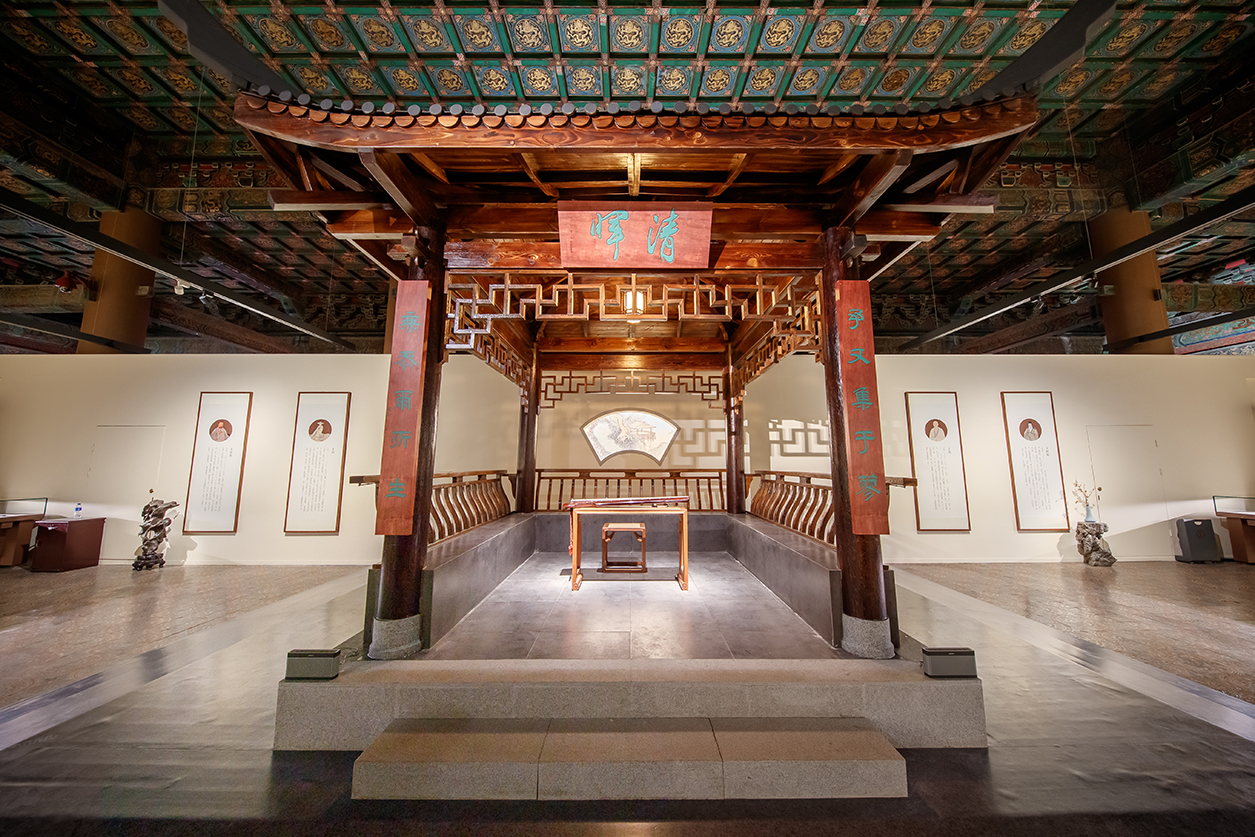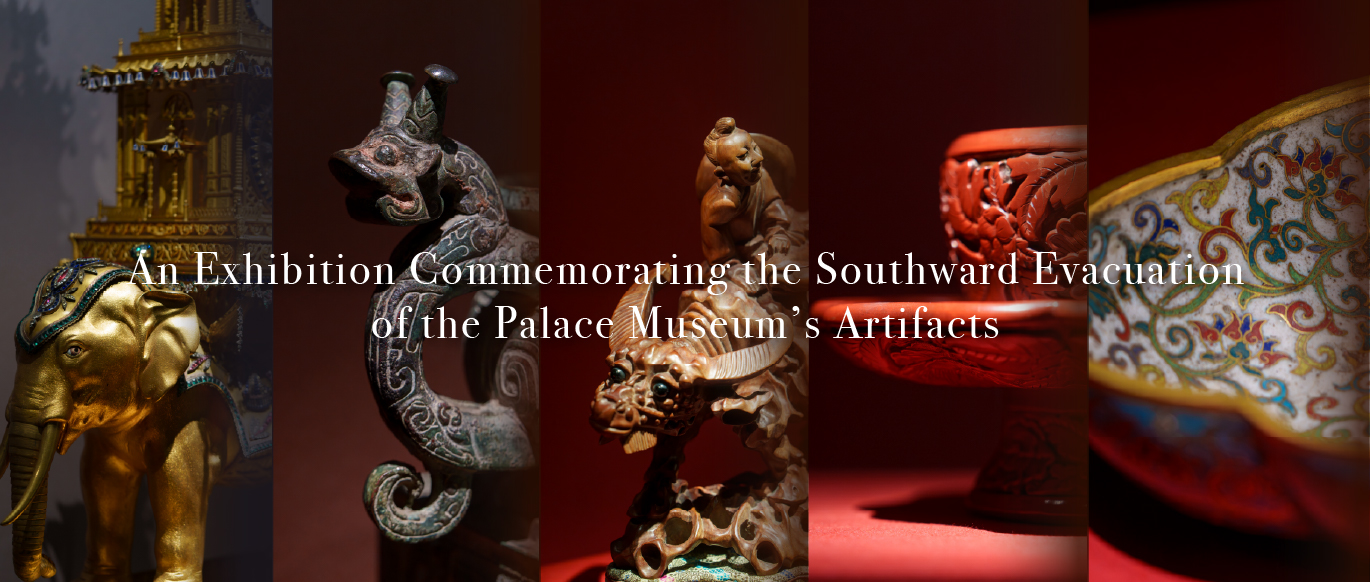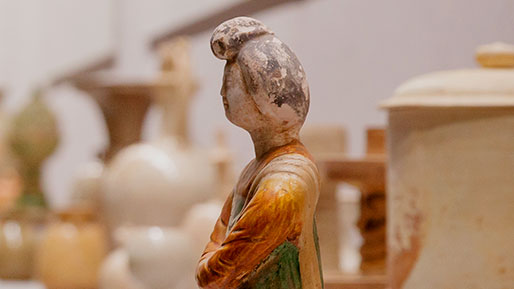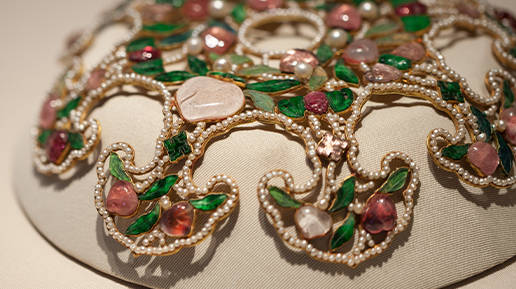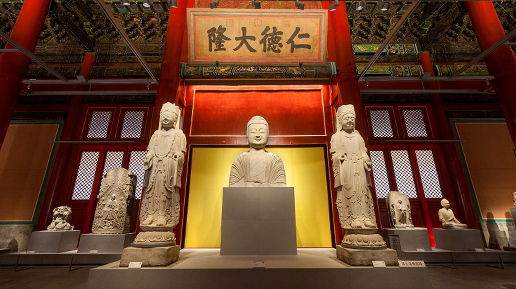
Introduction
At the end of the Ming dynasty (1368–1644) and beginning of the Qing period (1644–1911), four painters with the surname Wang became highly influential throughout the community of traditional Chinese artists. Associated with one another via educational or familial connections, these artists are known to historians as the Four Wangs. They followed Dong Qichang’s (1555–1636) dichotomy of Southern and Northern Masters (Nanbei zong), which venerated the literati styles of the South and stressed the imitation of ancient and classical styles and techniques. Of the four, Wang Shimin (1592–1680) studied the method of Huang Gongwang (1269–1354) and resulted in his own rigorous techniques and an elegant style. Meanwhile, Wang Jian (1609–1677) researched the Four Yuan Masters and traced certain artistic styles back to Dong Yuan (act. tenth c.) and Juran (surname unknown, act. Five Dynasties period, 906–960); he excelled at both ink monochrome and polychrome ink and color paintings. Transcending various schools of ancient styles to form his own, Wang Hui (1632–1717) combined elements from works by masters of the South and the North and infused his paintings with intense observations of nature. Finally, Wang Yuanqi (1642–1715) was a master of texture shading and is known for his vigorous brushwork and contemplative compositions. Wang Yuanqi developed what became known as the Loudong school with adherents such as Wang Yu (1714–1748) and Huang Ding (1660–1730). At the same time, Wang Hui led the formation of the Yushan school with successors including Yang Jin (1644–1728) and Gu Fang (act. Qing dynasty). During the Qing dynasty, the Four Wangs were recognized as orthodox (i.e., authentic) landscape painters, and their work was imitated by both court painters and commoners. Their work continues to influence Chinese artists.
The exhibition is divided into three main sections, namely, Section I: Foundations; Section II: Paintings; and Section III: Schools. Displaying the art of these painters, the exhibition highlights how they developed their art by studying ancient and classical works and infused their work with inspiration from the natural world. Their continuance of traditional forms combined with a willingness to innovate resulted in a complete transformation of Chinese painting. This reappraisal of their paintings and the history of Qing-dynasty landscape paintings provides insight into the cultural value of “modeling after the classical”.
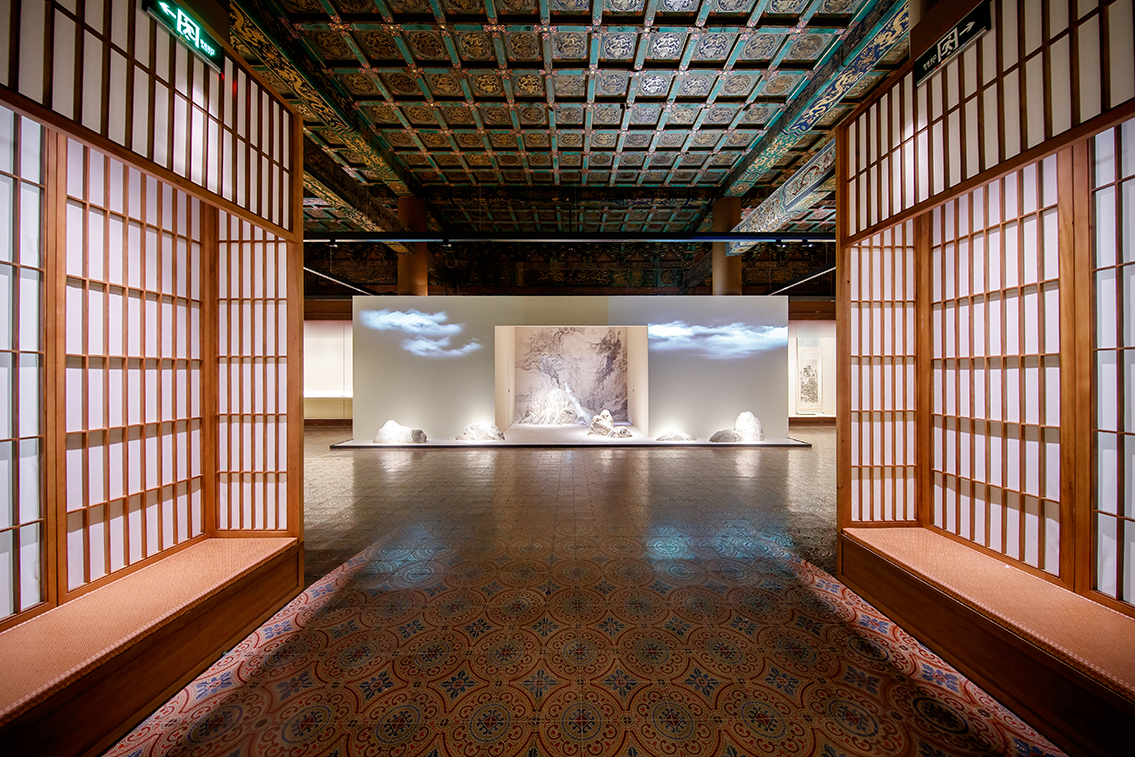
Section I: Foundations
The Four Wangs—Wang Shimin, Wang Jian, Wang Hui, and Wang Yuanqi—of the early-Qing period each spent their formative years meticulously studying the works of classical Chinese artists. However, they did not merely imitate artistic predecessors; rather, they researched their methodology and styles and developed their own synthesis with unique characteristics. As the Four Wangs studied the classical masters, they venerated the Southern Masters after the thought of Dong Qichang and expanded his theory to include artists such as Liu Songnian (act. Southern Song, 1127–1279), Li Cheng (act. tenth c.), Ma Yuan (act. Southern Song), and Xia Gui (act. Southern Song), who were originally regarded by Dong as “Northern Masters”. Wang Yuanqi developed the idea of Southern Masters as the pure classical-lineage while Wang Hui is known for his masterful synthesis of Southern and Northern Masters.
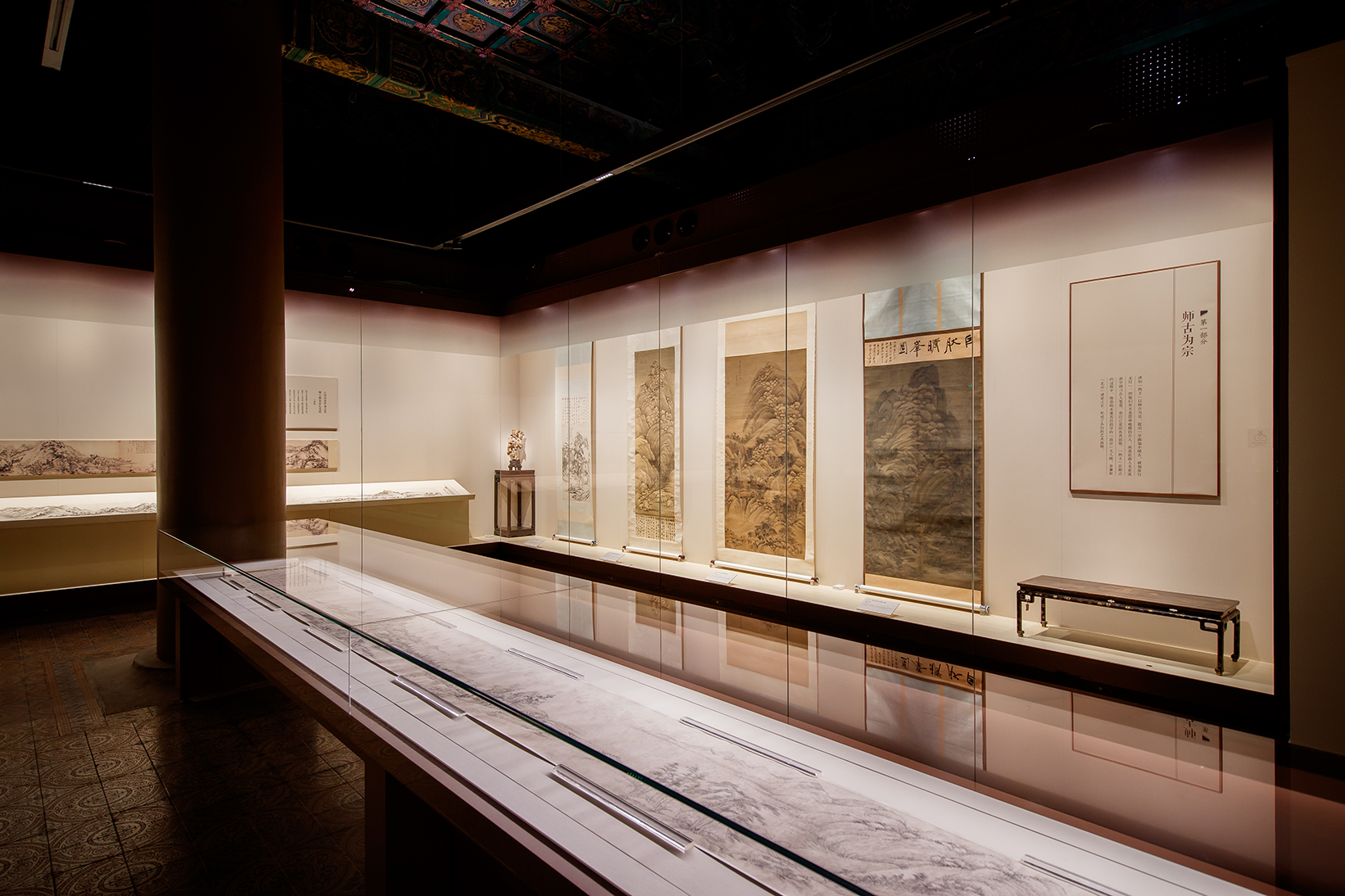
Section II: Paintings
The Four Wangs essentially dominated the art of landscape painting during the Qing dynasty. “If not trapped by Shigu, then shackled by Lutai” was a satirical saying of the period that shows the artistic influence of the four, especially Wang Hui (also known by his courtesty name Shigu) and Wang Yuanqi (style name, Lutai). Although they sought to continue in the painting styles of the ancients and stressed the Southern Masters of Dong Qichang’s theory, the four painters also sought to master the six principles as employed by the great painters of the Song (960–1279) and Yuan (1271–1368) dynasties. While they each placed a great deal of emphasis on the full command of brushwork, they developed idiosyncratic styles. Each is known for certain characteristics: Wang Shimin for luxuriance and smoothness, Wang Jian for beauty and strength of form, Wang Hui for skillful delicateness, and Wang Yuanqi for simplicity and splendor.
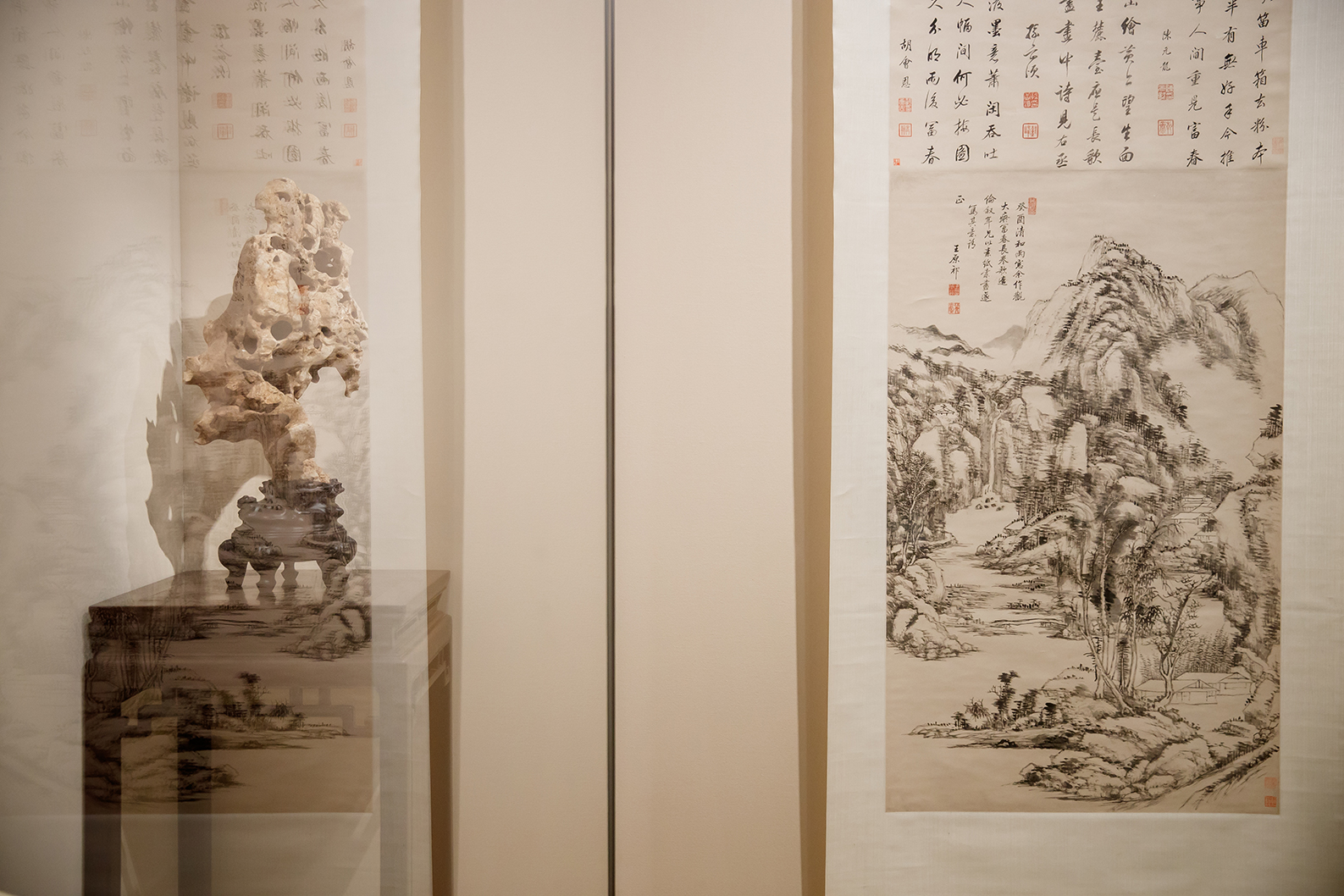
The Paintings of Wang Shimin
Wang Shimin (1592–1680) began his art studies under the tutelage of Dong Qichang. The master led the young Wang in his imitation of classical artists, pursuit of literati styles, and mastery of the great works of the Song and Yuan periods. His education taught him expressive depiction but, in many cases, betrays the influence of Dong’s style. During midlife, Wang Shimin became infatuated with the art of the Yuan dynasty painter Huang Gongwang and imitated much of his aesthetic. While he did not abandon influences from other artists, the influence from his teacher Dong was gradually diminished. Towards the end of his life, he continued to model his work after that of Huang and combined various elements from the works of artists such as Dong Yuan, Juran, and Wang Meng (1308–1385). In his lifelong pursuit of the art, he established his own mature and robust style.
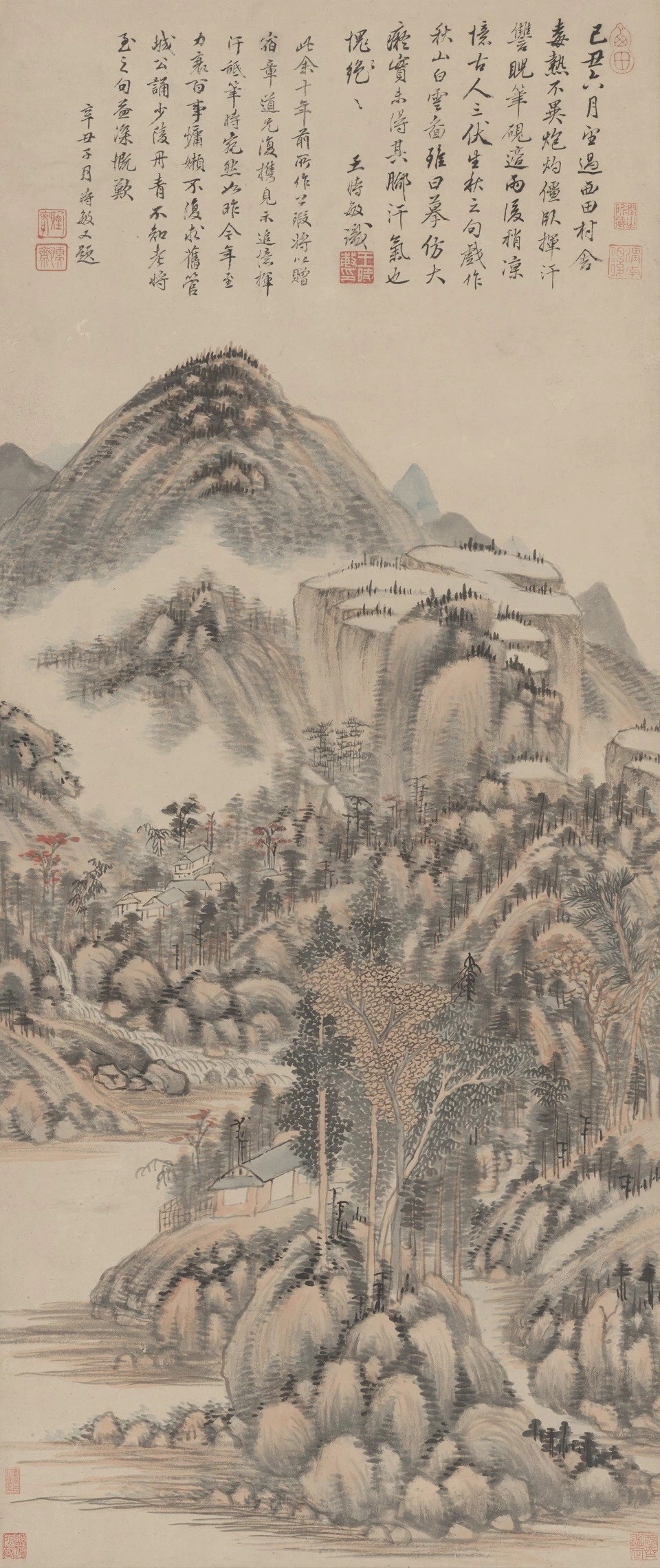
Autumn Mountains and White Clouds by Wang Shimin
The Paintings of Wang Jian
Wang Jian (1609–1677) is known for his mastery of imitating classical styles. He incorporated various elements from the works of earlier artists like Dong Yuan and Juran and from those of the Yuan-dynasty painters Huang Gongwang, Wang Meng, Wu Zhen (1280–1354), and Ni Zan (1301–1374). He also added features from the paintings of Shen Zhou (1427–1509) and Wen Zhengming (1470–1559). He, too, was a student of Dong Qichang. Wang Jian’s brushwork shows signs of a meticulous method, and he used a heavy application of dense ink. His trees and foliage are verdant and dense, and the topography is realistic with features such as deep gorges and precipitous mountains. He was proficient in texture shading for rocky surfaces. His expressive brush technique and applications of ink resulted in beautiful forms. In his use of black ink and deep green colors, he revealed his pursuit of Northern Song (960–1127) blue-and-green landscape styles and blue-and-green coloration elements of the Three Zhaos—Zhao Ling (act. eleventh c.), Zhao Boju (act. twelfth c.), and Zhao Mengfu (1254– 1322). Stressing the importance of calligraphic elements in painting, he developed a style with salient signs of classical influences.
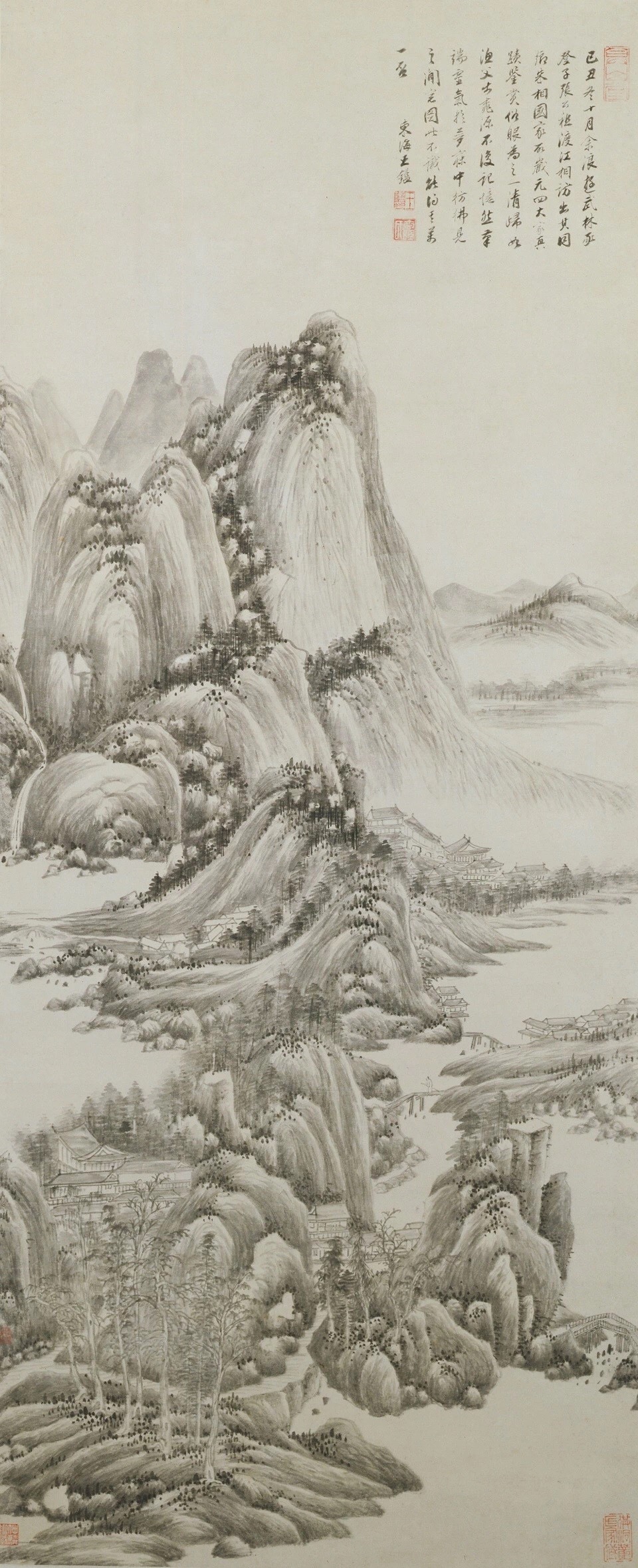
After the Spirit of the Four Yuan Masters by Wang Jian
The Paintings of Wang Hui
The painting styles of Wang Hui (1632–1717) can be divided into an early, middle, and late period. His early-period style covers the time before his fortieth birthday when he studied the works of classical artists and incorporated the methods of Dong Yuan and Juran and studied the works of Huang Gongwang and Wang Meng. During this early period, his brushwork is fluid with a proficient elegance. His middle period covers the time from his fortieth to sixtieth birthdays in which he combined styles from classical landscapes with his observations of natural landscapes. These works show his proficiency in texture shading and expressive depictions of various topographical features. The late period covers the time after his sixtieth birthday. The works from this final period show his maturity but also reveal a decline in his proficiency; nevertheless, his brilliance is evident in these last works.
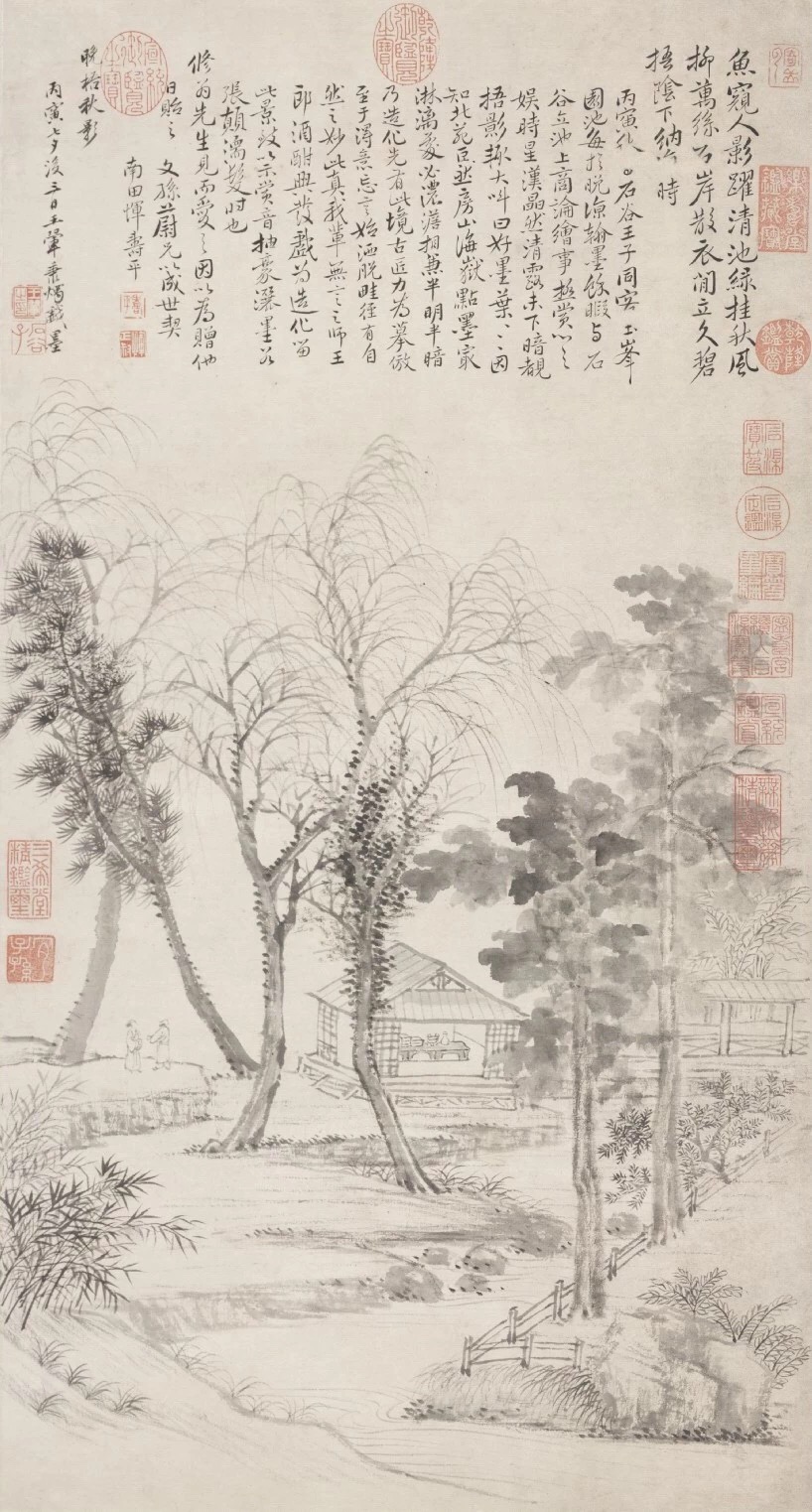
Shadows of Paulownia Trees in the Autumn Evening by Wang Hui
The Paintings of Wang Yuanqi
Wang Yuanqi (1642–1715) was taught by his grandfather Wang Shimin and studied the works of Huang Gongwang and other great painters of the Song and Yuan dynasties. He dedicated himself to emulating the great painters of the past in his practice of the six principles of painting (namely, energy, brushwork, form, color, arrangement, and imitation). He sought to concretely apply the theoretic principles and the aesthetics of the traditional art to his work and placed a great deal of emphasis on brush techniques. With his self-styled “diamond-pestle brush tip” approach, he developed a vigorous brush technique. In his application of ink, he created unique features with an alternation between diluted and dense ink and sought a balanced interaction of the brush and ink. His texture shading was typically produced with a dry brush. As he aged, his technique continued to develop, but his brushwork reached unprecedented levels of mastery. In his use of colors, he often substituted colors for ink or blended color and ink. His works are highly expressive and show his outstanding artistry.

Robust and Vigorous Landscape by Wang Yuanqi
Section III: Schools
Wang Shimin and Wang Jian were responsible for pioneering and supporting the painting community of the early-Qing period; consequently, they have been called the “Leaders of the Painting Garden” and the “Ford and Bridge for Students.” Later on, Wang Hui and Wang Yuanqi would establish, respectively, what became known as the Yishan and Loudong schools of painting and would attract many students. These Four Wangs essentially dominated the art of landscape painting in the Qing dynasty. Nie Chongzheng (b. 1938) of the Palace Museum noted, “Court-painted landscapes of the Qing period are the dominion (tianxia) of the Four Wangs. This fact is common knowledge among art and painting historians.” Wang Hui’s student Song Junye and Wang Yuanqi’s students Tangdai, Jin Yongxi, and Wang Jingming were all employed as painters in the Qing court. Indeed, Wang Hui was recommended for imperial commission by Song Junye and directed the painting of The Kangxi Emperor\'s Southern Inspection Tour (Kangxi nanxun tu). Another significant pupil was Tangdai who studied under Wang Yuanqi and was honored by the Kangxi Emperor (r. 1662–1722) as the “Principle Graduate of Painting” (Hua zhuangyuan). Other court artists who studied Wang Yuanqi’s approach and style include Zhang Zhongcang, Chen Shan, Fang Cong, and Wang Bing; they all earned the appreciation of the Qianlong Emperor (r. 1736–1795). Although merely modeling after the Four Wangs out of admiration, Dong Bangda (1696–1769), his student Qian Weicheng (1720–1772), and other scholarly painters were also favored by the emperor. Some of the Four Wangs’ family members were recognized for their art and called the Lesser Four Wangs (Xiao Siwang)—Wang Yu (1714–1748), Wang Su, Wang Jiu, and Wang Chen (1720–1797)—and the Latter Four Wangs (Hou Siwang)—Wang Tingyuan, Wang Tingzhou, Wang Mingshao (1732–1788), and Wang Sanxi. Due to the limited space available for this exhibition, only a few works of the Lesser Four Wangs and of Wang Sanxi (of the Latter Four Wangs, of whom only his works are in the Museum’s collection) are on view as a demonstration of the legacies of the Four Wangs.
Biographical Sketches
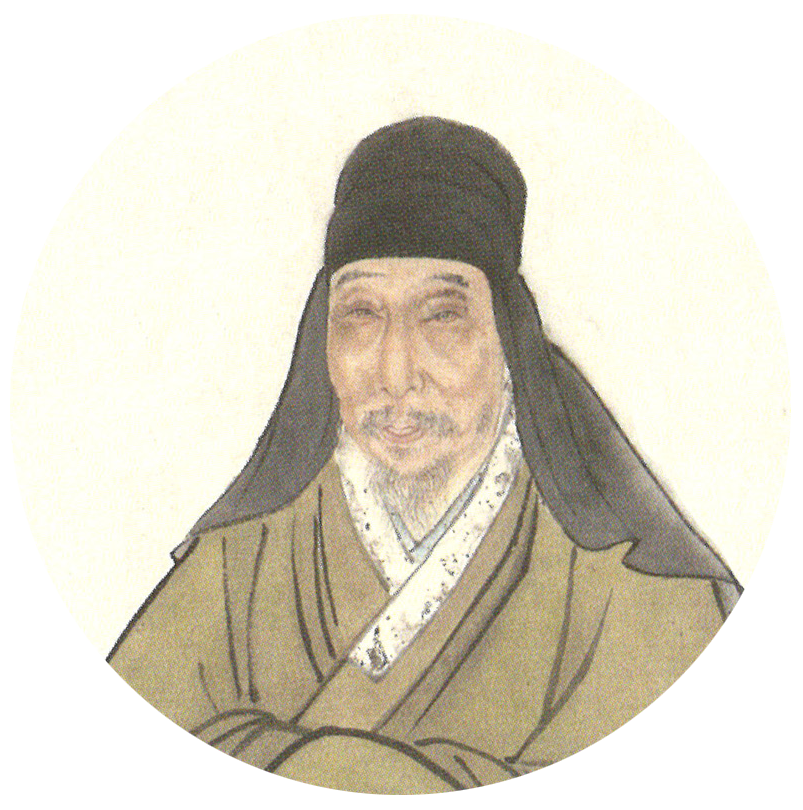
Wang Shimin
Wang Shimin (1592–1680) was originally named Yuzan and was known as Shimin from the age of twelve (in sui). His courtesy name was Xunzhi, and his style name was Yanke. He also went by the sobriquets Nuozhai and Ouxie Daoren. Later in life, he used the style names Guicun Laonong and Xilu Laoren. Additionally, Xitian Xiansheng and Xitian Zhuren are other sobriquets by which he was known. During his life, his studio was called the Hut of Sweeping Blossoms (Saohua an), Hall of Agricultural Celebration (Nongqing tang), and Hut of Rice Fragrance (Daoxiang an). Born into a respected family in the Department of Taicang in Suzhou Prefecture, South Zhili (present-day Taicang, Jiangsu Province), Wang Shimin was the grandson of a grand councilor and the son of a court astrologer. His grandfather, Wang Xijue (1534–1610), enjoyed preeminent status in court. His father, Wang Heng (1561–1609), served as a scribe in the Hanlin Academy and is recognized for his superb calligraphy. In the spring of 1614 (the forty-second year of the Wanli Emperor, r. 1573–1620), Wang Shimin was appointed to serve in government due to familial privilege. After many promotions, he attained the post of vice-minister in the Court of Imperial Sacrifices (Taichang si). After the Manchu conquest and establishment of the Qing dynasty (1644–1911), he withdrew from official duties and lived as a recluse and whiled away his time with calligraphy and painting. A great mentor to proteges, he was honored as one of the “Leaders of the Painting Garden”. His extant works include Old Drafts of Yuxie (Yuxie jiucao), Supplemental Drafts of Yuxie (Yuxie xucao), Poetry Drafts by Xilu (Xilu shicao), Additional Poetry by Xilu (Xilu shiyu), Posthumous Teachings of the Honorable Fengchang (Fengchang gong yixun), Colophons for Paintings by Xilu (Xilu huaba), and Inscriptions and Colophons for Paintings by Wang Fengchang (Wang Fengchang shuhua tiba).
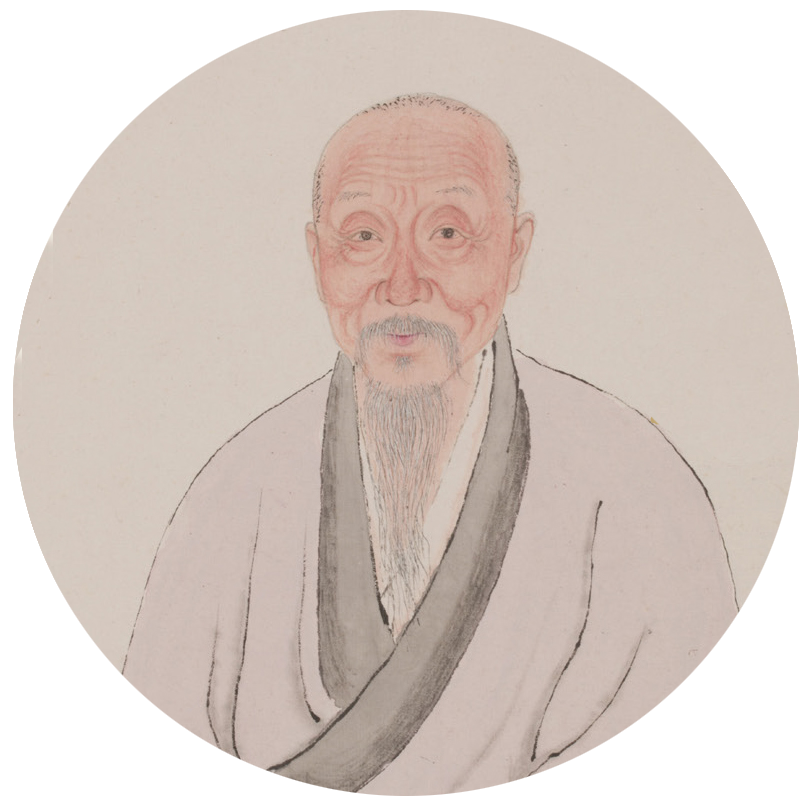
Wang Jian
Wang Jian (1609–1677) is also known by his courtesy name Yuanzhao (with yuan being one of three different homophonic characters he used interchangeably, with yuan being a replacement of xuan, or with yuanzhao with one of the alternative yuan characters and a different homophonic zhao character). He also used the style names Xiangbi and Ranxiang Anzhu. Due to his official post in the Prefecture of Zhi, Department of Lian (Lianzhou, present-day Guangxi, Hepu County), he was called Wang Lianzhou. Originally from Taicang in Jiangsu Province, he was the great-grandson of Minister Wang Shizhen (1526–1590) who served in the Ministry of Justice at Nanjing during the Ming dynasty. After the first year of the Kangxi reign, he changed his courtesy name from Xuanzhao to Yuanzhao in order to avoid the taboo use of the characters in the Kangxi Emperor’s given name (Xuanye); afterwards, he always wrote this sobriquet in one of a few ways with interchangeable homophonic characters. Wang Jian and Wang Shimin both studied under Dong Qichang; these three artists were named among the Nine Friends of Painting (huazhong jiuyou). Wang Jian was an expert in painting theory and proficient in imitating classical works of art. He was especially familiar with the art of Dong Yuan and Juran. Due to his pioneering work, he was known as a “Ford and Bridge for Students.” His Colophons for Paintings from the Hut of Dyed Incense (Ranxiang an bahua) was compiled by Qin Zuyong (1825–1884) during the Qing dynasty.
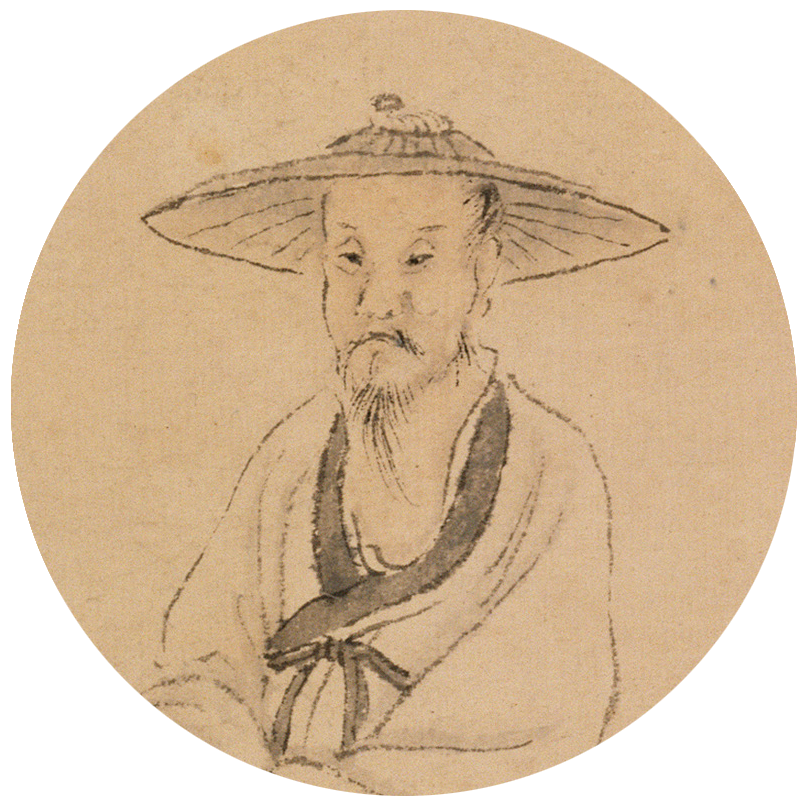
Wang Hui
Wang Hui (1632–1717) also went by the courtesy names Shigu and Quqiao and the style names Wumu Shanren and Gengyan Sanren. He had the additional sobriquets of Gengyan Waishi, Jianmen Qiaoke, and Qinghun Laoren. His studio was known as the Belvedere of Clarity and Radiance (Qinghui ge). Born in Changshu, Jiangsu Province, Wang Hui studied painting, a family tradition going back several generations. His paternal great-great-grandfather Wang Bochen studied the painting style of Cui Bai (act. eleventh c.) and is known for his accomplished paintings of birds and flowers while his grandfather Wang Zaishi was proficient in painting both landscapes and birds and flowers. Wang Hui’s father Wang Yunke focused entirely on landscapes and developed an elegant style in that genre. In his formative years, Wang Hui became fond of painting and at the age of sixteen began to study under Zhang Ke, another artist of the Changshu area. After becoming a pupil of Wang Jian and Wang Shimin, he copied classical works from the Song and Yuan dynasties in their collections and established himself in the tradition of emulating historical styles. With the influence of these and other teachers, and as a keen observer of nature, Wang Hui developed a splendid style replete with innovation and elegance. During his successful career, high-status imperial officials and literati vied for his attention. At the age of sixty (in sui), he was summoned to serve in the imperial court after a campaign of recruitment of commoners. He directed the painting of Southern Inspection Tour (Nanxun tu), which featured the Kangxi Emperor’s grand procession, and was honored with the title “Landscapes Clear and Radiant.” Known as the pioneer of the early-Qing Yushan school of painting, he is recognized for Paintings and Colophons of Clarity and Radiance (Qinghui huaba), Exhortations of Clarity and Radiance (Qinghui zengyan, which he oversaw), Strips of Calligraphy Bequeathed by Qinghui (Qinghui zengyi chidu), and Painting Appraisal (Huaquan ping), a cooperative work with Yun Shouping (1633–1690).
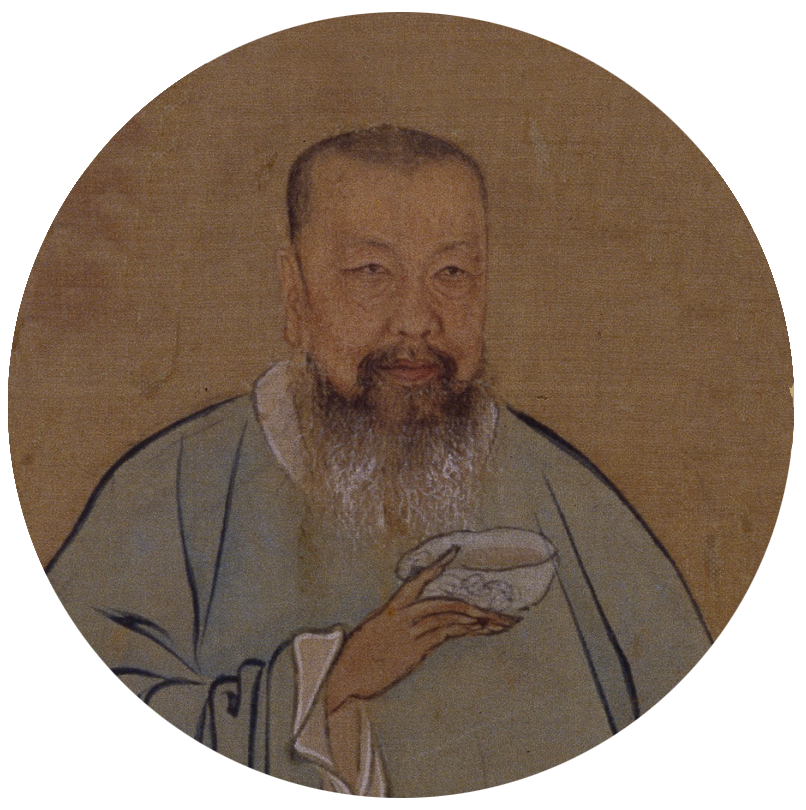
Wang Yuanqi
Wang Yuanqi (1642–1715) is also known by his courtesy name Maojing and style name Lutai. He had the additional sobriquet of Shishi Daoren, and his personal seal had the inscription Xilu Houren. His studio was called the Hut of Sweeping Blossoms (Saohua an), Studio of the Appointed Immortal (Qixian zhai), and the Pavilion of Covered Paintings (Yanhua lou). Born in Taicang, Jiangsu Province, he was the grandson of Wang Shimin. In 1670 (the ninth year of the Kangxi Emperor), he achieved status as a metropolitan graduate (jinshi), and, in 1683 (the twenty-second year of Kangxi), he was appointed as a county magistrate. In 1687 (the twenty-sixth year of Kangxi), he began serving as a supervising secretary in the imperial court. At the age of sixty, he was appointed to the Hanlin Academy and worked as a compiler of Calligraphy and Painting Catalogue of the Studio of Admired Literature (Peiwen zhai shuhua pu); he also directed the completion of the work Grand Pageant for the Imperial Birthday (Wanshou shengdian). After many promotions as an official, he ended his imperial service as a left vice-minister in the Ministry of Revenue. He was known widely as Minister of Revenue Wang. Wang Yuanqi would often paint in the presence of the emperor, and the Kangxi Emperor honored him with a seal with his imperial inscription "Paintings Worthy of Presentation to Viewers" (Huatu liuyu ren kan). Dying in office, Wang Yuanqi was granted full funerary rites. His works include Illustrated Explanation of the Great Watery Land (Da luze tushuo), Casual Brush by the Window during the Rain (Yuchuang manbi), Painting Drafts by Lutai (Lutai tihua gao), Catalogue of Painting Drafts by Minister of Revenue Wang (Wang sinong tihua lu), and Collected Works from the Pavilion of Covered Paintings (Yanhua lou ji). He is also recognized as the pioneer of the Loudong school of painting.
Translated and edited by Adam J. Ensign and Zhuang Ying with contributions by Xu Bingbin
